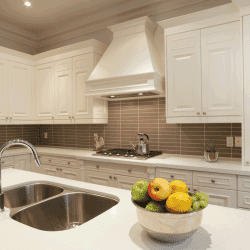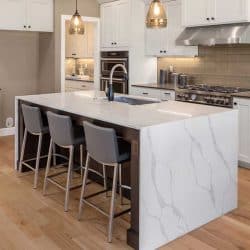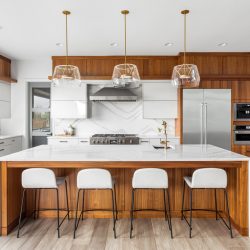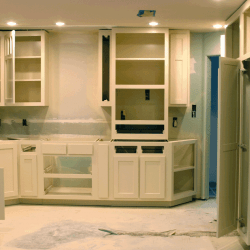Today, the center of family life is often the modern kitchen with a big beautiful kitchen island. The kitchen island makes trying a new recipe easier with all of its countertop space. It can be a great space with seating for your kids to eat their snacks or do homework. But, should a kitchen island be fixed to the floor? For your convenience, we've brought you the answer.
The kitchen island should be fixed to the floor so it will be safe and solid. With a stable island, you can have one with cook surfaces, a stove or dishwasher, or even the kitchen sink itself.
By anchoring the kitchen island to the floor, you give it stability that allows for more functionality. Below, you will find advantages to an anchored kitchen island. Read on for ways to anchor a kitchen island, solutions for a wobbly island, as well as a Do-It-Yourself (DIY) ideas for a kitchen island with cabinets.
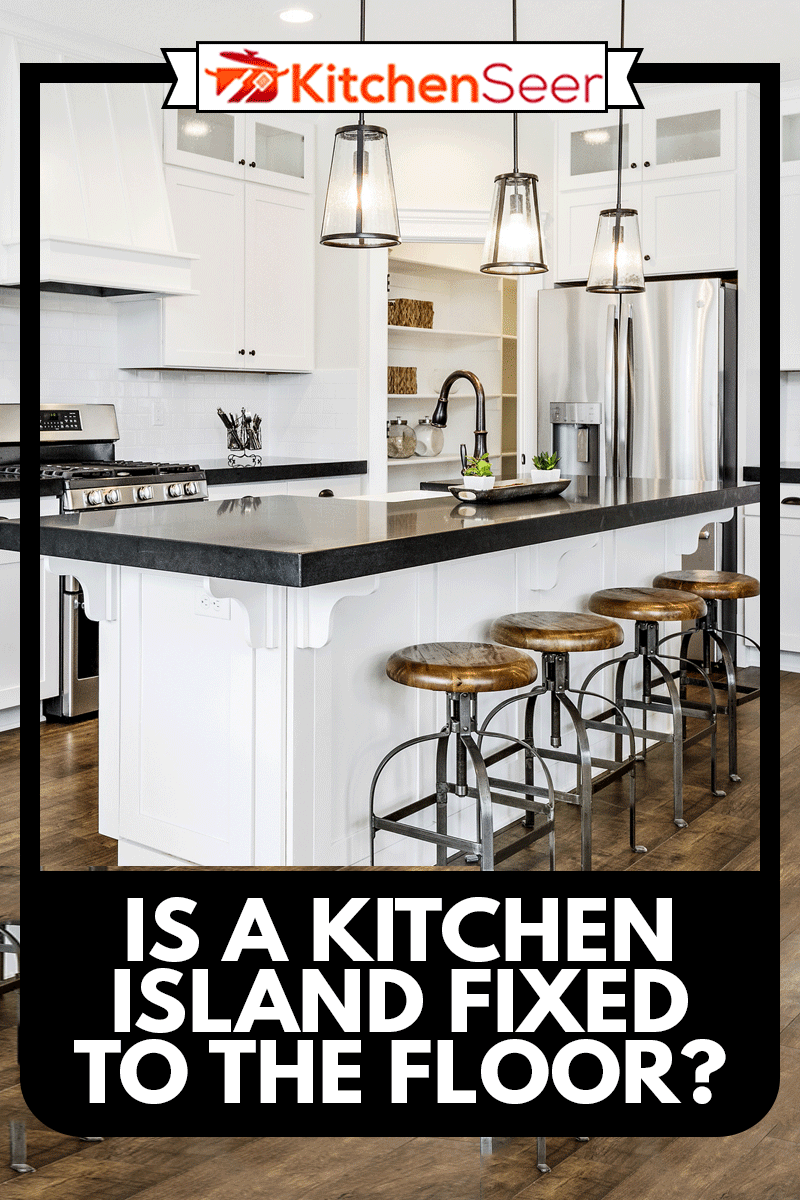
Advantages to a Kitchen Island Fixed to the Floor
Since the 1990s, when kitchens got bigger and became important centers for family life, the kitchen islands have become an integral design element of those kitchens. Today, kitchens are designed around a beautiful kitchen island - full of storage, often with built-in cook surfaces and comfortable seating. Everything is safer with the island fixed to the floor.
Cook surfaces should always be on non-moving surfaces. A fixed island is constructed to be sturdy and will hold heavier pots, pans, and small appliances. A rolling island would need to be lighter so that it can move easily. Sitting at a moveable island for eating could be messy if not dangerous if you were to lean on the island and it moved.
![Picture of modern black and white kitchen with kitchen island, How Tall Is A Kitchen Island? [Dimensions Explored]](https://kitchenseer.com/wp-content/uploads/2021/06/Picture-of-modern-black-and-white-kitchen-with-kitchen-island-1200x800.jpg)
Kitchen Island Features
Many kitchen islands have a variety of features, including:
- Pull out drop leaves, with support struts, for homework or eating
- Pull out cutting boards
- Kitchen drawers for silverware, knives storage, or both
- Spice racks
- Designed storage for pots, pans, and cooking sheets
- Cooking surfaces
- Ovens
- Dishwashers
- Trash and recycling space
- Cooking fans
- Electrical outlets and USB plugs
- The kitchen sink
- Tablet or television screens
Does a Kitchen Island Have to be Anchored to the Floor?
You do not have to anchor the kitchen island to the floor. It is a safer idea to anchor the kitchen island to the floor, giving it more versatility.
The light butcher block-type rolling kitchen islands are good options in small kitchens in an apartment or a small 1950s ranch. The anchored island gives you more seating options with storage and possible cooking or cleaning surfaces in a modern, spacious kitchen.
How is a Kitchen Island Attached to the Floor?
In a perfect world, the carpenter anchors the kitchen island to the subfloor when the kitchen is being renovated. The island is permanently part of the kitchen. For future flexibility, you can anchor it to the floor instead.
The main two ways of fixing a kitchen island to the floor are by screwing it to the floor surface or, better yet, using wood cleats.
How to Use Wood Cleats to Anchor the Kitchen Island to the Floor
Wood cleats are the best way to anchor the kitchen island to the floor. Wood cleats might be 4x4 woodblocks for the interior corners of the cabinets. Or you can cut eight to 12 inch 2x4 boards, screw them to the subfloor to form corners that the cabinet fits over, securing it to the floor. The cabinets are then screwed into the wood cleats.
Using Screws to Secure to the Kitchen Island to the Floor
In some installations, you may decide to attach the kitchen island directly with screws through the flooring into the subfloor plywood, and if possible, into the floor joists. Be careful as screws can loosen over time, doing damage to the tile, wood floor, or your painted concrete floor.
Click here to see a cordless drill at Amazon.com.
Common Reasons a Kitchen Island May Be Wobbly
Kitchen islands can become loose and wobbly. This often happens if the island is only screwed into the top layer of the floor. Another common cause is that the cabinet walls are too thin. Sometimes the supports for the countertop are not secure.
Use a level on the countertop and then on the cabinet walls to see if they have issues. Then check the island legs or cabinet bottoms to see if any of the screws are loose on the wood cleats or to the floor itself. To see the bottom, you may need to remove the plinth (finished panels that cover the bottom where the cabinet screws to the wood cleats or covering the legs themselves, so the cabinet appears to go all the way to the floor) on each side.
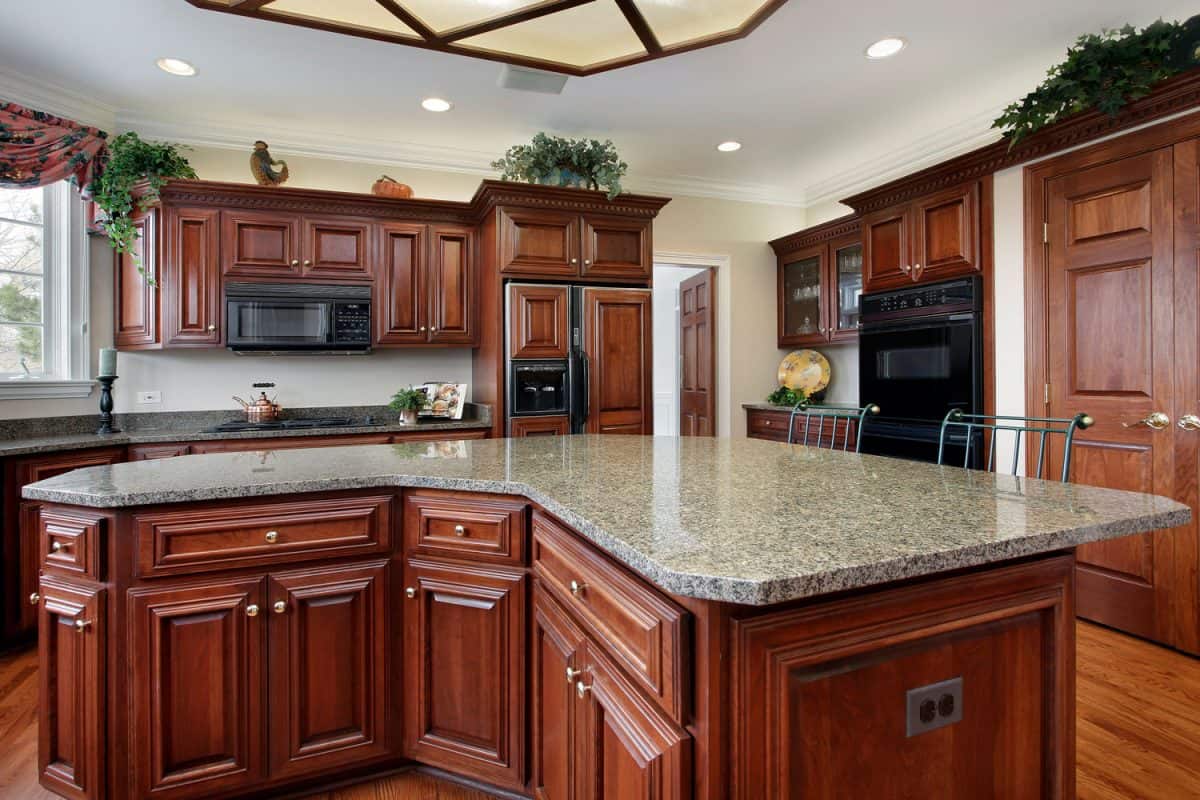
How do you fix a wobbly kitchen island?
To fix a wobbly kitchen island, you usually have to remove the countertop to access the countertop supports. With the countertop removed, you can measure and cut boards to glue and screw to the existing cabinet walls to strengthen them. For an uneven surface, you can add a new frame on top of the cabinet walls along the existing frame to give the countertop more support.
If the issue is with the legs, you may get away with removing the plinth and working on the legs direct. Adding more screws to the wood cleats or using a bracket might be an easy solution.
Calling a professional cabinet installer may be a good idea as this can get complicated fast.
How to build a kitchen island using base cabinets
As a DIYer, you may want to build the kitchen island yourself. To do this, choose your location, ensuring good walking and standing space on all sides of the future island. Measure and mark the floor with the outline of the cabinets.
The next step is to attach the wood cleats all the way through the finish flooring to the subfloor. Using 2x4 corner wood cleats will give excellent stability. Next, fit the base cabinets onto these wood cleats. Use wood screws to anchor the cabinets to the wood cleats.
Secure the Cabinets to each Other
When the cabinets are in place, use your level to make sure they are all plumb. Use shims to level out the surfaces. In the end, you will break these off to ensure a neat finish.
Use clamps inside to secure the cabinets from one to another. Predrill the holes for the wood screws. Next, screw the cabinets together, starting from the top to the bottom.
Anchor the Countertop to the Cabinets
The first step for anchoring the countertop to the cabinets is to measure and cut the laminate countertop to the size you want with the right amount of overhang. If you have had granite, concrete, or a quartz countertop cut, you are ready to go. Make sure you have enough people to help as these can be quite heavy.
The second step is pre-drill corner braces that you may use in the corner of the cabinets to give the countertop more stability. The corner braces go into the corners, so the surface is flush with the top of the cabinets themselves.
Third, use the right glue to stick the countertop to the corner braces and the top of the cabinets. Glue is specific to the material of the countertop.
Summary
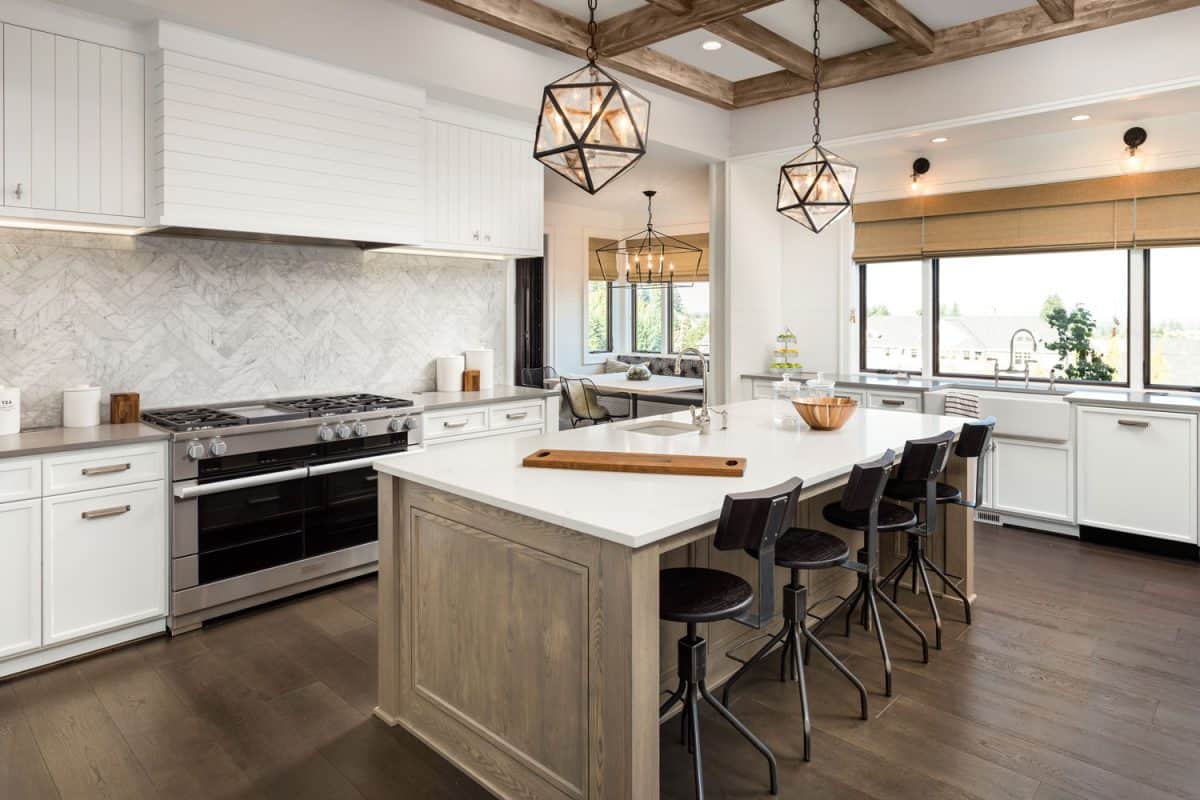
Big kitchen islands will give you all kinds of versatility for making the best kitchen space for family living. The kitchen island can be the place for eating, cooking, and good conversations. Anchored to the floor, the kitchen island will be stable and secure for all your family's needs.


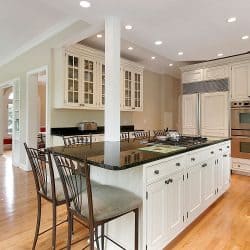
![Picture of modern black and white kitchen with kitchen island, How Tall Is A Kitchen Island? [Dimensions Explored]](https://kitchenseer.com/wp-content/uploads/2021/06/Picture-of-modern-black-and-white-kitchen-with-kitchen-island-250x250.jpg)
